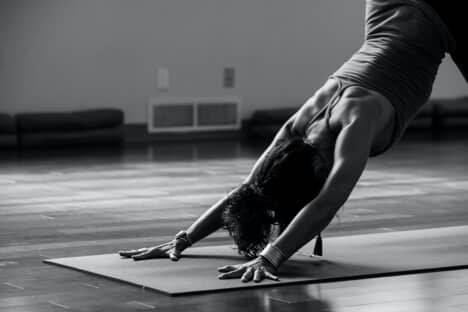Deciding how many days per week to work out is tough. The perfect workout plan will improve your fitness without infringing on your work schedule, family obligations or other aspects of life. That balance can seem impossible to strike, so what’s a person to do?
While standard recommendation for exercise across public health agencies is 30 minutes a day, five days a week, that advice is rather canned and doesn’t say much about different fitness levels or goals. In this article, learn how many days per week you should work out, based on your schedule and other factors.
How Often to Work Out

The best workout schedule for you depends on a number of factors unique to you. Some of those factors include:
- Your training age: how long you’ve been exercising
- Your training status, including markers like your max heart rate and VO2 max
- The type of training you’re accustomed to, and the type you want to do now
- Any health or medical conditions you may have
- Your schedule and how many days you can realistically commit to
- Your fitness goals
How often you should work out also depends on whether you want to do full-body workouts or follow a workout split. This makes a big difference as to how much volume your body can handle without edging close to overtraining syndrome.
In general, fitness experts don’t recommend surpassing five training sessions a week for the average exerciser. Five days per week is plenty to help even advanced workout enthusiasts reach their goals and maintain their fitness. For some people, five days a week is too many and can lead to burnout, demotivation, or overuse injuries.
Three days per week is generally considered the healthy minimum, so put two and two together, and the ideal training schedule is three to five days per week.
Weekly Workout Plan Ideas
Fitness Level | Workouts Per Week |
Beginner | 3 workouts; 2 strength training, 1 cardio |
Intermediate | 4 workouts; 2-3 strength training, 1-2 cardio |
Advanced | 5 workouts; 3-4 strength training, 1-2 cardio |
3-Day Workout Routine
If you can work out three days a week, consider opting for full-body workouts each time. With just three workouts per week, your body will have plenty of time to recover in between sessions, so you can safely work all of your muscle groups each time. A common three-day routine is Monday-Wednesday-Friday, but any other combination can work as long as you get adequate rest in between workouts.
4-Day Workout Routine
A four-day routine can consist of full-body workouts, isolation workouts, or a combination of both. It’s a matter of how you space out your workout days. For instance, if you go to the gym Monday, Tuesday, Wednesday, and Friday, you could do full body, lower body, upper body, full body. Four full-body workouts a week might be a bit much for beginners.
5-Day Workout Routine
If you can commit to a five-day workout routine, you’ll get the most benefits from a split workout plan. Workout splits involve isolating muscle groups and training them on different days to get the most out of each training session. Cycling muscle groups also allows for simultaneous recovery and work.
Sample Workout Routines
3-Day Routine | 4-Day Routine | 5-Day Routine | |
Monday: | Full-Body | Full-Body | Lower Body |
Tuesday: | Rest | Rest | Upper Body |
Wednesday: | Full-Body | Upper Body | Cardio |
Thursday: | Rest | Rest | Rest |
Friday: | Full-Body | Lower Body | Lower Body |
Saturday: | Rest | Rest | Upper Body |
Sunday: | Rest | Cardio | Rest |
How Often to do Cardio vs. Weights
Whether you choose a three, four, or five-day workout plan, interspersing cardio with resistance training supports your overall health.
The optimal ratio depends on your goals (someone who wants to run a marathon will need more cardio days than someone who wants to get stronger at powerlifting moves), but everyone can benefit from at least one cardio workout per week.
As for strength training, research shows that at least two days per week are necessary for continual improvement.
Why You Need Rest Days From the Gym

Rest facilitates recovery.
Many people are surprised to learn that the muscle-building magic happens during rest, not during workouts. When you work out, your muscles become tired and damaged, and they need rest to rebuild and recover. If you continually pummel your muscles without giving them time off, you may actually enter a catabolic and destructive state.
Contrary to popular belief, rest days don’t have to be lazy days. You can still be active on rest days even if you’re sore — in fact, active recovery can be more helpful than passive recovery. Gentle movement, such as a long walk, a yoga flow, or a leisurely bike ride, encourages blood flow to tired muscles and can speed up the recovery process.
A personal trainer can help determine how often you should work out. Talk to your local World Gym staff about a personalized workout plan.

